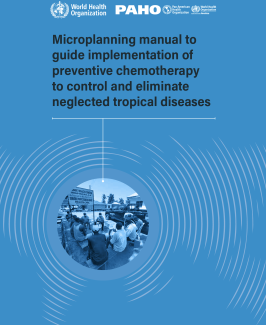
Trachoma is the leading cause of infectious blindness. Transmitted by eye-seeking flies and rubbing one’s eyes with contaminated fingers or objects, repeated trachoma infections cause scarring on the inside of the eyelids. The scarring may cause the eyelids to turn in and the eyelashes to scrape the cornea. Children are more likely to be infected and transmit the  disease;1 however, the blinding form of trachoma occurs much more frequently in adults, particularly women, who are two to three times more likely than men to suffer blindness from trachoma.2
disease;1 however, the blinding form of trachoma occurs much more frequently in adults, particularly women, who are two to three times more likely than men to suffer blindness from trachoma.2
Act | West provides financial and technical support to national ministries of health for annual mass treatment with antibiotics, part of the WHO’s SAFE (Surgery, Antibiotics, Facial cleanliness, and Environmental improvements) strategy for elimination of trachoma as a public health problem. Act | West also supports baseline trachoma mapping, program monitoring and evaluation, and the development and updating of trachoma action plans and trachoma elimination dossiers in supported countries.
Trachoma is present in 24 districts in the three countries that receive support from Act | West;3 and over 5 million people are considered at risk for trachoma in these countries. After treatment, trachoma prevalence has been reduced to levels that make the risk of transmission unlikely in 92% of these districts. Although post-treatment surveillance is ongoing, it’s reasonable to say that over 78 million people living in these districts are no longer at risk of trachoma infection or trachoma-induced blindness.

As of FY22 five Act | West countries that are considered endemic for trachoma—Benin, Burkina, Guinea, Senegal, and Mali—have met the criteria to stop mass treatments for trachoma nationwide. Act |West continues to support annual trachoma treatment in three countries—Cameroon, Cote d’Ivoire, and Niger. However, all Act | West-supported countries with trachoma have been able to stop mass treatments in at least one district; and all are on track to eliminate trachoma as a public health problem by the year 2030.

- Hu, Victor H et al. “Epidemiology and control of trachoma: systematic review.” Tropical medicine & international health: TM & IH vol. 15,6 (2010): 673-91. doi:10.1111/j.1365-3156.2010.02521.x
- Cromwell, EA., Courtright, P., King, JD., Rotondo, L., Ngondi, J., & Emerson, PM. (2009). The excess burden of trachomatous trichiasis in women: A systematic review and meta-analysis. Transactions of the Royal Society of Tropical Medicine and Hygiene, 103(10), 985-992. https://doi.org/10.1016/j.trstmh.2009.03.012
- Benin, Burkina Faso, Cameroon, Cote d’Ivoire, Guinea, Niger, Senegal and Togo. The World Health Organization validated elimination of trachoma as public health problem in Ghana in 2018.


